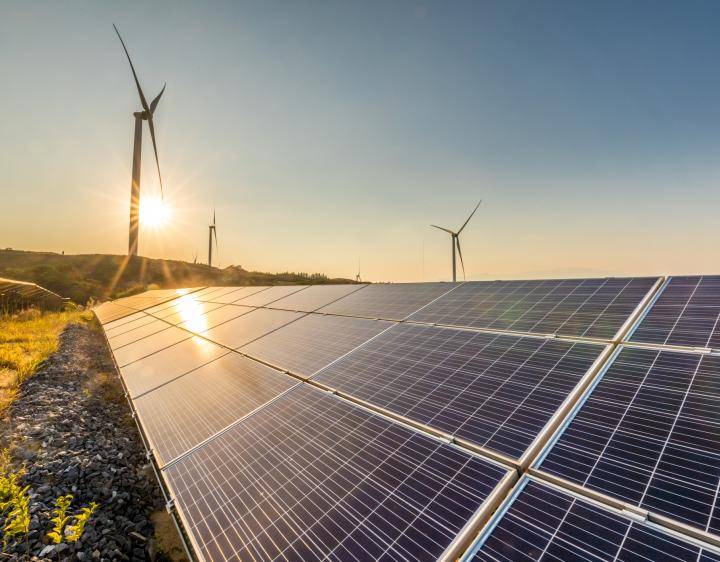
After the emotional scenes nearly two months ago at the end of COP26, has a bit of distance provided any more perspective on the outcomes? Our view is still best captured by the Financial Times headline that proclaimed that more was achieved than expected, but still less than hoped. There were positive steps accomplished at the conference, but these need to be immediately caveated by what was not achieved. For example, the new emission reduction pledges that were made amount to a not insignificant reduction of 0.3°C in anticipated warming. But even with all targets fully met this still amounts to a central forecast of 1.8°C of warming.
The list goes on. The Glasgow Climate Pact mentioned fossil fuels in the text for the first time in a global agreement, but commitments on coal were limited to ‘phasing down’ rather than ‘phasing out’. The need for a ‘just transition’ was also acknowledged, but financial commitments to support the zero-carbon transition in developing countries were still inadequate.
The shape and pace of the transition is now clear
Notwithstanding these clear failings in the final text, the conference did clarify what is needed in terms of the shape and pace of the zero-carbon transition in key areas. Central to achieving sustained reductions in greenhouse gas (GHG) emissions is the role of renewable energy. The shift from fossil to renewable power generation is at the heart of every country’s Nationally Determined Contribution (NDC) and globally the share of power generation capacity that needs to come from renewables needs to increase from 33% in 2018 to over 90% by 2050 with onshore wind and solar PV shouldering the lion’s share of this growth.1 290GW of solar PV will need to be installed annually by 2030, and with 180GW installed in 2021, this looks demanding but achievable. Wind though is languishing on just 90GW of installations in 2021 (and flat on 2020) and will need to be adding 270GW annually in just eight years. This challenge is enormous but there is little alternative if global warming is to be kept in check. The WHEB strategy holds companies directly exposed to growth in renewables including both solar PV with investments in SolarEdge and First Solar and in wind with investments in Vestas.
The transport sector meanwhile is transitioning more quickly than analysts had anticipated. This is particularly true in the light duty vehicle segment. At Glasgow, a group of countries and automotive companies pledged to make all new vehicles zero emission vehicles by 2040 and by 2035 in advanced markets. There were some important absences from this group, with neither the US nor China committing, but the pledge did include GM, Ford, Mercedes-Benz and many other auto companies. Meanwhile sales of battery electric (BEV) and plug-in hybrid electric (PHEV) vehicles continue to accelerate. Sales figures are expected to top 5.6m globally in 2021, up more than 80% on the previous year.2 In the UK, in December 2021 BEVs alone accounted for more than a quarter of all vehicle sales.3 WHEB portfolio businesses including Aptiv, Infineon, and TE Connectivity have direct exposure to the growth in BEVs and PHEVs.
Methane
The conference also made important progress on efforts to reduce methane emissions. Methane is a potent GHG and has a shorter residence time in the atmosphere. Efforts to limit emissions in the short-term can therefore have an outsized effect in reducing levels of warming. A commitment to reduce methane emissions by 30% by 2030 (from 2020) was agreed with big emitters such as the US, Brazil and Indonesia on-board. However, other major emitters such as China, Russia and India did not sign-up.
Fossil fuel production is a large source of so-called ‘fugitive’ methane emissions and the WHEB strategy has no real exposure to this sector. However, agriculture is another major source, with beef production alone contributing approximately 7% of all GHGs. The WHEB strategy is invested in the Dutch firm DSM that, among other things, manufactures a feed additive for cattle that reduces methane emissions by up to 30%.
…and Monreal
The horrifying images of the Elz river bursting its banks in Monreal, Germany over the Summer brought home – at least to European audiences – the threat posed by climate change and extreme weather. Similar scenes of devastation are now frequent occurrences around the world. The Glasgow Pact provided for new national reporting requirements to support increased investment and coordination in efforts to adapt to the level of climate change that is now inevitable. The conference did also agree commitments from developed countries to provide $40bn in funding for adaptation by 2025.
The WHEB strategy invest in two businesses that will enable communities to adapt more effectively to these more extreme levels of precipitation and flooding. Arcadis, a Dutch consulting environmental engineer, has already helped cities and communities such as New York City and New Orleans to adapt infrastructure and planning to accommodate more extreme weather. Advanced Drainage Systems manufactures stormwater drainage systems that help to control and manage flood waters.
Carbon trading, afforestation and agriculture
The Glasgow conference also made progress on a wide range of other issues. There was a deal setting out the detail on the market mechanisms needed for trading carbon emissions. Progress was made on efforts to reverse deforestation and spur innovation in low impact agriculture. Both of these programs are aimed at reducing GHG emissions, but also critically, they are intended to better protect and support the recovery of biodiversity.
Ultimately the Glasgow conference was only ever going to be a step down the road to a zero-carbon economy. Planning for COP27, taking place in Egypt in November 2022, is already well underway and more progress will be needed then.
1 https://www.irena.org/publications/2021/Jun/World-Energy-Transitions-Outlook
2 https://www.greencarcongress.com/2021/11/20211110-bnef.html
3 https://heycar.co.uk/blog/electric-cars-statistics-and-projections
